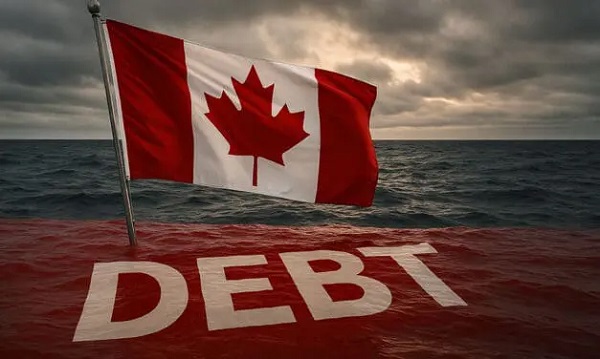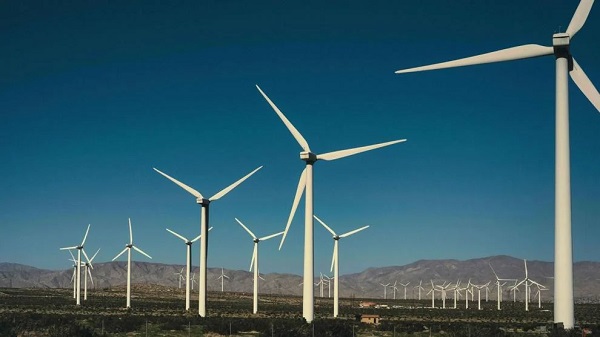Business
Younger Casino Bettors Are Upping the Ante on Risky Gambling in British Columbia, Documents Show
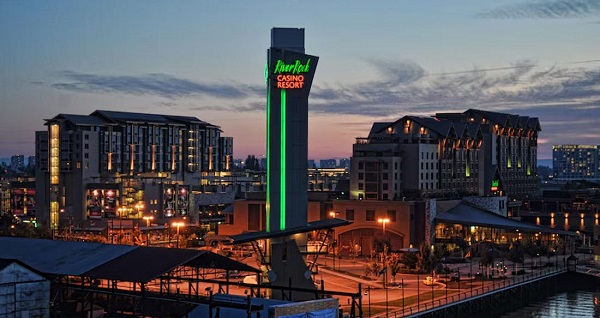
By Stanley Tromp
Younger casino players in British Columbia are significantly increasing high-risk gambling behaviours, while “gambling literacy” has declined over the past year, according to data from the province’s gaming provider, the BC Lottery Corporation.
This and other concerns were outlined in the Player Health Tracker Report by Ipsos Research, released in July 2024 and commissioned by BCLC. The Bureau obtained six reports totaling 903 pages through a Freedom of Information request. The findings point to an alarming rise in high-risk gambling among younger bettors in the second quarter of fiscal 2024/2025—raising fresh questions for BCLC, an agency previously criticized for prioritizing revenue over social responsibility.
“Younger players are known to display more high-risk behaviours, believe more strongly in gambling myths, and play more games, especially high-risk ones,” the report said.
To address this, Ipsos recommended that “BCLC could consider targeting younger casino players in its campaigns geared toward casino players, with messaging related to increasing gambling literacy and promoting safer gaming.”
The concerning trend comes under the watch of Premier David Eby. In 2018, when Eby served as B.C.’s Attorney General, he told CBC that his government should be doing much more to help gambling addicts.
Eby also pointed out that his NDP government had moved responsibility for the gaming industry from Finance to the Attorney General’s office in 2017, because “the B.C. Lottery Corporation should not be responsible for both revenue generation and regulation.” That decision was later reversed, with oversight returning to the Finance Ministry.
In a warning back in 2020, an internal briefing note from the B.C. Ministry of Public Safety highlighted the “rapidly changing” online betting market as a source of mounting risks.
The note said more people were gambling “in an environment that may not have appropriate responsible gambling and integrity controls, that may allow minors to gamble, and that may carry an increased risk for fraud and money laundering.”
The new survey results were based on 498 interviews with adults in British Columbia who had played at least one BCLC game in the past year. Three of the reports track changes in gambling behaviours from the first to the third quarter of fiscal year 2024/25—that is, from April to December 2024.
PlayNow.com is BCLC’s internet gambling platform, featuring online table games, slots, and sports betting. It was launched in 2004 and later expanded to other western provinces.
In the first quarter (April–June 2024), “PGSI behaviours increased significantly among PlayNow players,” according to the Ipsos report. (The Problem Gambling Severity Index, or PGSI, is a nine-item self-report scale measuring risky gambling behaviours in the general population.)
The highest-risk PlayNow users were identified as young urban males—“the least likely to feel responsible for what happens to them.” Their gambling motivations include “feeling tense and wanting to be in the zone,” factors not observed in other segments. They were also found to be the least likely to engage in responsible play, despite recognizing risks in their own behaviour.
In the second quarter (July–September 2024), PlayNow players’ high-risk PGSI scores trended upward, while gambling literacy declined. Ipsos warned: “Given that PlayNow players remain a more at-risk group, BCLC could focus on reinforcing gambling literacy and safer gambling behaviours.” It advised close monitoring to identify whether preventative actions were needed.
In the third quarter (October–December 2024), Ipsos observed a tentative improvement: “High-risk PGSI has declined significantly among PlayNow players, although the shift should be interpreted with caution due to lower base sizes… high gambling literacy has rebounded.”
Overall, Ipsos found that online players demonstrated stronger belief in gambling myths and more problematic behaviours than retail players. Their pre-commitment habits—such as setting spending limits—and overall gambling literacy were weaker by comparison.
Sports betting remained a distinct concern. “Given that online sports bettors continue to be a higher-risk group,” Ipsos wrote, “BCLC could benefit from maintaining targeted initiatives that tackle the specific challenges of sports betting and promote safer gambling practices, especially during major sporting events such as the Super Bowl, March Madness, and the NHL and NBA play-offs in the coming months.”
Casino players were a more at-risk group in the first quarter. In the second quarter, there was a significant drop in gambling literacy among this segment. But by the third quarter, Ipsos reported some improvements: “Casino players display some improvement in high-risk PGSI, high pre-commitment, and high gambling literacy this quarter.” Ipsos attributed this to a higher proportion of casual casino players compared to moderate or high-frequency players.
The public was also surveyed on which casinos or gaming community centres they had visited in the past 12 months. River Rock Casino in Richmond was the most reported location, with 27% of respondents naming it. This was followed by Vancouver’s Parq Casino (24%), Burnaby’s Grand Villa Casino (23%), and Coquitlam’s Hard Rock Casino (20%). Other B.C. casinos saw significantly lower visitation numbers.
However, from January to December 2024, “casino players are significantly more likely to believe several gambling myths compared to last year,” Ipsos warned. These included beliefs that: (1) casino staff can change game outcomes, (2) some slot machines are “hot” and due for a big jackpot, and (3) a payout rate of 85% means players will get back $85 of every $100 spent.
Ipsos cautioned that any gains in safer gambling behaviours and literacy may not be sustainable if belief in these myths continues to grow. It recommended that BCLC intensify efforts to dispel such misinformation.
Keno players were also flagged as high-risk during the second and third quarters, and showed low gambling literacy. “When looking at product cross-play, most Keno online players also play Keno at retail locations, and thus online players also exhibit a more at-risk profile,” Ipsos reported. (In February 2024, a B.C. player won $1 million playing Keno—the largest payout in BCLC history.)
BCLC has stated that its GameSense program provides players with information about how gambling works and offers tools to support informed decisions. The program aims to improve gambling literacy by helping players understand the odds of winning, distinguish between chance- and skill-based games, dispel common myths, and locate available resources.
However, in the second quarter, pollsters found that “awareness of a safer gambling education program in BC significantly decreased, as did awareness of the GameSense program across all business units.” In the third quarter, results were mixed: awareness of a safer gambling education program improved, and GameSense name recognition held steady, but both familiarity with and usage of the program declined.
The Bureau also obtained BCLC’s Key Performance Indicator (KPI) Tracker reports by Harris Insights for November 2024 (Q2) and February 2025 (Q3). Many pages were redacted by BCLC on the grounds that their release would cause financial harm.
These tracker documents monitor the corporation’s core business indicators and are reported to shareholders in annual statements and service plans. They are also used internally to evaluate performance across business units.
The Q2 report noted that “lottery-only players are declining and shifting to including casino and PlayNow games.” It also found that trust in BCLC games among facility players was significantly higher that quarter. Notably, PlayNow.com sports bettors used illegal betting websites significantly less in Q2 compared to Q1.
In Q3, cross-play between lottery, casino, and PlayNow increased from FY2023/24 to FY2024/25, as did the number of casual casino players and overall participation on PlayNow. At the same time, casual lottery play—such as Lotto 6/49, Lotto Max, Daily Grand, pull tabs, and scratch tickets—declined from Q2 back to Q1 FY2024/25 levels. Ipsos attributed this drop mainly to a loss of casual retail players, although overall lottery participation over the past year remained stable.
Finally, The Bureau reviewed a December 2024 report on BCLC’s “Social Purpose and Brand,” prepared by Unity Insights and Angus Reid.
Their survey data showed that core players across all BCLC facilities—casinos, community gaming centres, and bingo halls—had increased quarter-over-quarter. However, PlayNow sports bettors were increasingly using other websites for wagering, and the number of users betting exclusively on PlayNow declined.
The report also evaluated BCLC’s Integrated Enterprise Strategy, which aims to “increase the positive community and economic impact of gambling entertainment… and to leverage the BCLC brand to bring the commitment to social purpose to life.”
“Generally, consumers seem to articulate a sense of skepticism when it comes to any organization claiming to provide social benefits,” the pollsters wrote. “Virtue signaling was brought up in a negative light (moral grandstanding), where many did not understand how an organization could exist to provide social benefits while balancing profit generation.”
The report posed a direct challenge to BCLC’s leadership: What is the goal of its Social Purpose platform? “Are we trying to use our commitment to social purpose as a lever for acquisition, or is this truly about uplifting a social cause regardless of the business outcome?”
The authors suggested reframing the approach to center on the public. “BCLC players are committed to social purpose, and we thank them for that,” they wrote—before floating a new brand slogan: “BCLC = British Columbians Love Community.”
Stanley Tromp is a graduate of the University of British Columbia Political Science department and an expert on Freedom of Information.
The Bureau is a reader-supported publication.
To receive new posts and support my work, consider becoming a free or paid subscriber.
Invite your friends and earn rewards
Business
The richest man alive just got a whole lot richer
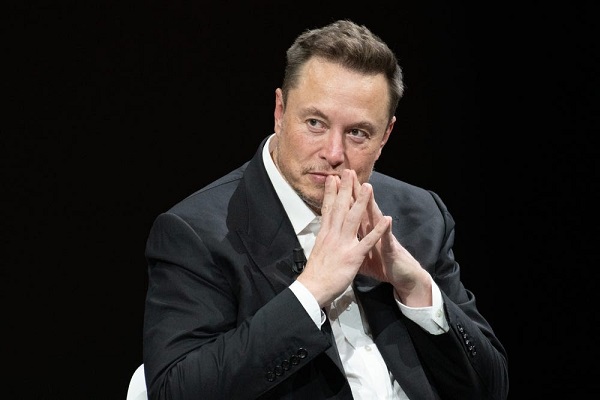
Quick Hit:
Elon Musk on Wednesday became the first person in history to hit a $500 billion net worth, according to Forbes. The Tesla, SpaceX, and xAI founder’s fortune now sits roughly $150 billion ahead of Oracle co-founder Larry Ellison, with Tesla’s surging stock and SpaceX’s record valuation driving the leap.
Key Details:
- Forbes reported Musk’s net worth crossed the $500 billion mark around 3:30 p.m. ET, fueled by Tesla’s nearly 4% stock gain Wednesday — adding roughly $9.3 billion to his wealth.
- Musk’s fortune has grown from $24.6 billion in March 2020 to $100 billion by late 2020, $200 billion in 2021, $400 billion in 2024, and now $500 billion.
- Tesla shares have nearly doubled since April, when Musk said he would step back from his role leading President Trump’s Department of Government Efficiency (DOGE) to focus on Tesla. The EV maker’s market cap is now within 10% of its all-time high, with Musk’s 12% stake worth about $191 billion.
Elon Musk achieved yet another major milestone Wednesday, becoming the first ever person worth $500 billion. Musk, who became the first person ever worth $400 billion or more in December, is $150 billion ahead of runner-up Larry Ellison—and half-way to becoming the world’s first… pic.twitter.com/h9LJmAvT7F
— Forbes (@Forbes) October 1, 2025
Diving Deeper:
Elon Musk made history Wednesday as the first individual ever to surpass a $500 billion personal net worth, according to a report from Forbes. The Tesla and SpaceX CEO’s fortune crossed the milestone in mid-afternoon trading, following another surge in Tesla’s share price and continuing investor confidence in Musk’s technology empire.
Tesla stock jumped nearly 4% Wednesday, pushing the company’s valuation closer to its all-time high. Forbes estimates Musk’s 12% stake in Tesla alone is worth about $191 billion. The remainder of his wealth comes from SpaceX — currently valued at around $400 billion — and his artificial intelligence firm xAI, worth roughly $60 billion.
Musk’s rise in wealth has been staggering. In March 2020, he was worth $24.6 billion. By late 2020, he had crossed the $100 billion threshold, reaching $200 billion in 2021 and $400 billion last year. His $500 billion milestone now puts him more than $150 billion ahead of the world’s second-richest person, Oracle co-founder Larry Ellison.
In a post on X last month, Musk said his compensation and influence over Tesla were not about money, but control over the company’s direction: “It’s not about ‘compensation,’ but about me having enough influence over Tesla to ensure safety if we build millions of robots,” he wrote. “If I can just get kicked out in the future by activist shareholder advisory firms who don’t even own Tesla shares themselves, I’m not comfortable with that future.”
According to Forbes, Tesla’s board recently proposed a new compensation plan for Musk worth as much as $1 trillion — the largest package ever offered to a corporate executive. The plan would grant Musk up to 12% of Tesla’s stock if the company hits a $8.5 trillion market cap and other performance milestones over a decade.
At his current trajectory, analysts suggest Musk could become the world’s first trillionaire by 2033 — an outcome that seemed unthinkable just five years ago. As Musk continues to balance his leadership at Tesla, SpaceX, and xAI, his financial empire appears to be expanding as rapidly as the industries he dominates.
Automotive
America’s Troubled EV Industry Loses Its Subsidized Advantage – Now What?
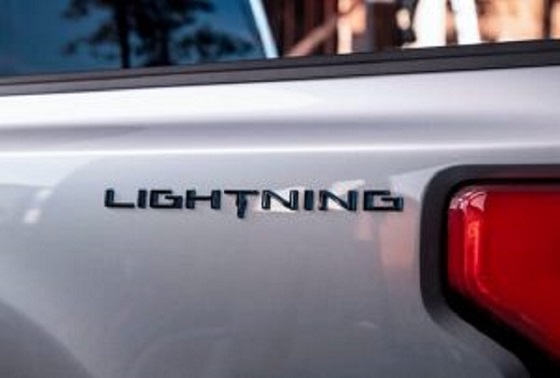

From the Daily Caller News Foundation
The Environmental Protection Agency announced Monday that it has assumed responsibility for what it says is the “Largest Lithium-Ion Battery Cleanup in Agency History” at the Moss Landing facility outside San Francisco.
Crews supervised by the EPA entered the facility this week to begin cleaning out the remains of the fire damaged batteries, which the agency says will be recycled at EPA-approved recycling facilities.
As has happened far too frequently, the retired batteries erupted spontaneously in January, leading authors of MIT’s weekly climate newsletter to speculate about what this latest conflagration would mean for the future of the electric vehicle and stationary battery storage industries going forward.
Dear Readers:
As a nonprofit, we are dependent on the generosity of our readers.
Please consider making a small donation of any amount here.
Thank you!
“With the growing number of electric vehicles and batteries for energy storage on the grid,” the authors wrote, “more high-profile fires have hit the news, like last year’s truck fire in LA, the spate of e-bike battery fires in New York City, or one at a French recycling plant last year.”
The parade of troubling incidents related to these batteries has continued throughout 2025. In June, for example, a large container ship called the Morning Midas, operated by Zodiac Maritime, sank into the Pacific Ocean after batteries in EVs it was carrying to Alaska spontaneously combusted, forcing the crew to abandon ship. A month later, U.S.-based shipper Matson announced it would no longer transport EV cargoes due to the obvious dangers involved. Three weeks later, Alaska Marine Lines put a similar policy in place.
All of these inconvenient news stories come at an already troubling time for the U.S. EV industry, given that its huge $7,500 per car federal subsidy expired at midnight, Sept. 30. That subsidy was enacted in the Orwellian-named Inflation Reduction Act of 2022 and subsequently repealed in the One Big Beautiful Bill Act signed into law by President Donald Trump on July 4 of this year.
Sales have spiked in the run-up to the subsidy expiration, to no one’s real surprise. But EV makers now face the troubling prospect of having to compete in the U.S. market absent that significant price advantage, leading many to anticipate a significant drop-off in sales.
Some carmakers have already begun to scale back operations. Stellantis announced the cancellation of a planned all-electric Dodge Ram pickup model on Sept.12, citing slowing demand for such trucks in a field already dominated by the Ford F-150 Lightning and the Tesla Cyber Truck. The fact that sales of those competing models are already coming in well below projections this year was another obvious motivating factor.
Ford, meanwhile, said in August it would delay the introduction of what it refers to as “next generation” updates to its Lightning pickup and full-sized electric van for two years due to the same challenging market conditions. “F-150 Lightning, America’s best-selling electric truck, and E-Transit continue to meet today’s customer needs,” the company said in what can only be described as an understatement.
Competitor GM announced it would take similar action on Sept. 4, saying it was suspending production of a pair of Cadillac SUVs – the mid-size Lyriq and the full-size Vistiq – at its assembly plant in Spring Hill, Tenn., effective in December. The company also said it would indefinitely delay the start of a second shift at an assembly plant near Kansas City.
Amid the frequent big fire events involving EV batteries and the industry’s fallout from the loss of a federal subsidy, it must be repeated here that the electric vehicle industry is not “new” or even a young one. It is in fact well over a century old, with the first electric cars introduced in the U.S. in the 1890s, during the same period when gas-powered cars started to come onto the market. In those early years, in fact, many experts insisted that electric cars would ultimately render gas-powered cars obsolete and become the dominant force in American transportation.
But makers of EVs then found themselves suffering from the same set of limitations that plague the industry well over a century later: Range anxiety, lack of infrastructure, and persistent unreliability.
The fact that an industry this old has still not solved for the same set of issues after so much time makes it reasonable to question whether it ever will.
David Blackmon is an energy writer and consultant based in Texas. He spent 40 years in the oil and gas business, where he specialized in public policy and communications.
-
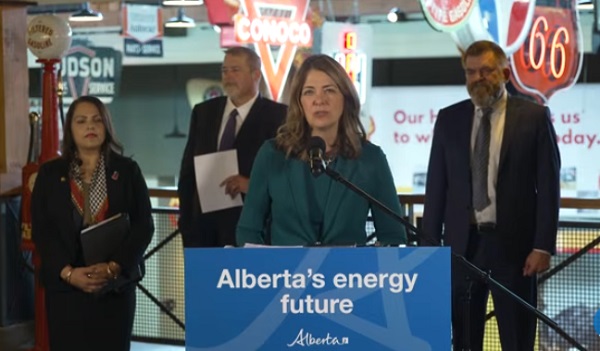
 Alberta16 hours ago
Alberta16 hours agoWith no company willing to spearhead a new pipeline under federal restrictions, Alberta takes the lead
-

 National1 day ago
National1 day agoCanada’s birth rate plummets to an all-time low
-

 Fraser Institute2 days ago
Fraser Institute2 days agoAboriginal rights now more constitutionally powerful than any Charter right
-

 Alberta2 days ago
Alberta2 days ago$150 a week from the Province to help families with students 12 and under if teachers go on strike next week
-

 espionage1 day ago
espionage1 day agoNorth Americans are becoming numb to surveillance.
-

 Crime1 day ago
Crime1 day agoPierre Poilievre says Christians may be ‘number one’ target of hate violence in Canada
-

 Alberta17 hours ago
Alberta17 hours agoTaxpayers: Alberta must scrap its industrial carbon tax
-

 Alberta16 hours ago
Alberta16 hours agoHalfway River First Nation makes history with Montney natural gas development deal

